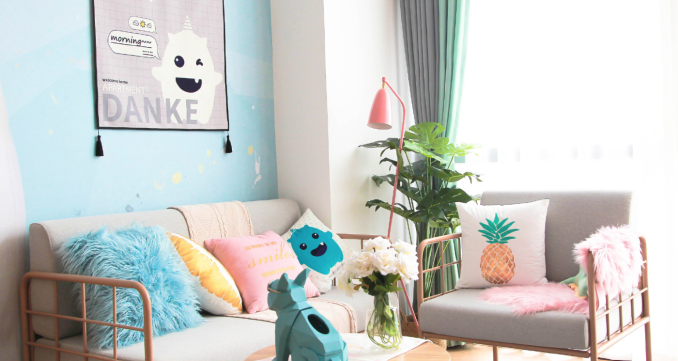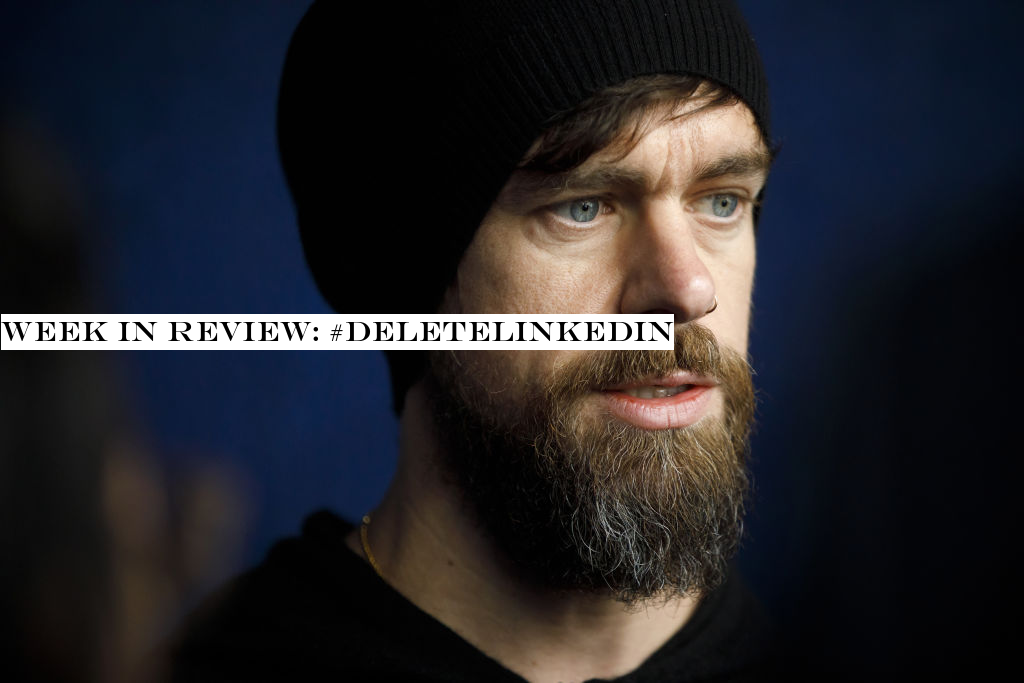Technology

The following post contains no major spoilers for &Living With Yourself,& but it does describe the showbig concept — which can be a fun surprise if you manage to watch without learning anything in advance. If thatwhat you want to do, maybe come back and read/listen later.
When we heard that Netflix &Living with Yourself& features Paul Rudd playing two different versions of himself — copywriter Miles Elliot and his clone — it was easy to imagine this as a showcase for Ruddcomedic acting, and for &Multiplicity&-style hijinks.
As we explain on the latest episode of the Original Content podcast, the show certainly has its share of laughs. Whatmore surprising, however, is the extent to which Miles& dilemma felt pretty real, and pretty resonant for at least a couple of your podcast hosts.
As he enters middle age, Miles has allowed himself to become grumpier, lazier version of himself, and a bad husband to his wife Kate (played by Aisling Bee). And while show never turns into a heavy drama,it still creates a believable portrait of a failing marriage and tells a compelling story around Miles& (often misguided) efforts to bounce back.
In addition to our review, we also discuss our first impressions of &The Morning Show& on Apple TV+ and our thoughts on the launch plans for HBO Max.
You can listen in the player below, subscribe using Apple Podcastsor find us in your podcast player of choice. If you like the show, please let us know by leaving a review on Apple. You can also send us feedback directly. (Or suggest shows and movies for us to review!)
And if you want to skip ahead, herehow the episode breaks down: 0:00 Intro 11:01 HBO Max discussion 00:44 &Morning Show& first impressions 22:53 &Living with Yourself& review (no spoilers except the basic concept) 37:18 &Living with Yourself& spoiler discussion
- Details
- Category: Technology

SpaceX has managed to run 13 successful parachute tests in a row of the third major revision of the parachute system itplanning to use for its Crew Dragon spacecraft. The most recent test, which SpaceX shared a shorted edited video clip of on Twitter, involved using the system with one of the parachutes intentionally not deploying, to prove that it can land the crew craft safely even in case of a partial failure.
This is a big step for SpaceXplan to launch NASA astronauts aboard Crew Dragon. Last month, NASA Administrator Jim Bridenstine visited SpaceX headquarters in Hawthorne, California, where he and SpaceX CEO Elon Musk held a press conference to discuss their progress on the commercial crew program. At that event, Musk said that he felt SpaceX was aiming to do &at least& 10 successful tests of its revised ‘Mark 3& parachute system in a row before any astronauts fly with the system in use.
&We certainly want to get […] at least on the order of 10 successful tests in a row before, before launching astronauts,& Musk said at the time. &So that seems like where the the behavior of the parachutes is consistent, is across 10 successful tests.&
At the time, Musk added that they were anticipating get to at least 10 successful test prior to the end of the year, so managing 13 definitely fits with that schedule, and in fact seems to be a rare occasion where SpaceX is actually ahead of the often optimistic timelines that Musk sets as targets.
This third generation of parachute being used for Crew Dragon uses Zylon in place of nylon, which is a polymer material originally developed by SRI and that provides the lines used in the parachute around three times the strength of nylon. SpaceX also updated the stitching pattern to optimize the load balance on the new parachutes.
Next up for SpaceX is a launch aboard test that should happen as early as this coming week. SpaceXtest will be a ground-baed test filing of the Crew Dragonabort engines, which is set to happen as early as Wednesday. After that, itstill hoping to get an in-flight abort test done before year& send, which will show how the Crew Dragon can jettison from a Falcon 9 rocket after lift-off in case of emergency.
Both NASA and SpaceX have expressed optimism about getting an actual crewed flight off the ground early next year, provided everything else in terms of testing requirements goes smoothly between now and then.
- Details
- Category: Technology
Read more: SpaceX achieves key milestone in safety testing of Crew Dragon spacecraft
Write comment (99 Comments)Hello and welcome back to TechCrunchChina Roundup, a digest of recent events shaping the Chinese tech landscape and what they mean to people in the rest of the world. Itbeen a very busy last week of October for Chinatech bosses, but first, lettake a look at what some of them are doing in the neck of your woods.
TikToktroubles in the U.S.
The challenge facing TikTok, a burgeoning Chinese video-sharing app, continues to deepen in the U.S. Lawmakers have recently called for an investigation into the social network, which is operated by Beijing-based internet upstart ByteDance, over concerns that it could censor politically sensitive content and be compelled to turn American users& data over to the Chinese government.
TikTok is arguably the first Chinese consumer app to have achieved international scale — more than 1 billion installs by February. Itdone so with a community of creators good at churning out snappy, light-hearted videos, highly localized operations and its acquisition of rival Musical.ly, which took American teens by storm. In contrast, WeChat has struggled to build up a significant overseas presence and Alibabafintech affiliate Ant Financial has mostly ventured abroad through savvy investments.
TikTok denied the American lawmakers& allegations in a statement last week, claiming that it stores all U.S. user data locally with backup redundancy in Singapore and that none of its data is subject to Chinese law. Shortly after, on November 1, Reuters reported citing sources that the U.S. government has begun to probe into ByteDanceacquisition of Musical.ly and is in talks with the firm about measures it could take to avoid selling Musical.ly . ByteDance had no further comment to add beyond the issued statement when contacted by TechCrunch.
The new media company must have seen the heat coming as U.S.-China tensions escalate in recent times. In the long term, TikTok might have better luck expanding in developing countries along ChinaBelt and Road Initiative, Beijingambitious global infrastructure and investment strategy. The app already has a footprint in some 150 countries with a concentration in Asia. India accounted for 44% of its total installs as of September, followed by the U.S. at 8%, according to data analytics firm Sensor Tower.

ByteDance is also hedging its bets by introducing a Slack-like workplace appand is reportedly marketing it to enterprises in the U.S. and other foreign countries. The question is, will ByteDance continue its heavy ad spending for TikTok in the U.S., which amounted to as much as $3 million a day according to a Wall Street Journal report, or will it throttle back as itsaid to go public anytime soon? Or rather, will it bow to U.S. pressure, much like Chinese internet firm Kunlun selling LGBTQ dating app Grindr (Kunlun confirmed this in a May filing), to offload Musical.ly?
Huawei is still selling a lot of phones
The other Chinese company thatbeen taking the heat around the world appears to be faring better. Huawei clung on to the second spot in global smartphone shipments during the third quarter and recorded the highest annual growth out of the top-5 players at 29%, according to market analytics firm Canalys. Samsung, which came in first, rose 11%. Apple, in third place, fell 7%. Despite a U.S. ban on Huaweiuse of Android, the phone makerQ3 shipments consisted mostly of models already in development before the restriction was instated, said Canalys. It remains to be seen how distributors around the world will respond to Huaweipost-ban smartphones.
Another interesting snippet of Huawei handset news is that itteamed up with a Beijing-based startup named ACRCloud to add audio recognition capabilities to its native music app. Ita reminder that the company not only builds devices but has also been beefing up software development. Huawei Music has a content licensing deal with Tencentmusic arm and claims some 150 million monthly active users, both free and paid subscribers.
Co-living IPOs

Chinamodern-day nomads want flexible and cost-saving housing as much as their American counterparts do. The demand has given rise to apartment-rental services like Danke, which is sometimes compared to WeLive, a residential offering from the now besieged WeWork that provides fully-furnished, shared apartments on a flexible schedule.
Four-year-old Danke has filed with the U.S. Securities and Exchange Commission and listed its offering size at $100 million, typically a placeholder to calculate registration fees. Backed by Jack Ma-controlled Ant Financial, the loss-making startup is now leasing in 13 Chinese cities, aggressively growing the number of apartments it operated to 406,746 since 2015. Its smaller rival Qingke has also filed to go public in the U.S. this week. Also operating in the red, Qingke has expanded its available rental units to 91,234 since 2012.
Apartment rental is a capital-intensive game. Services like Danke don&t normally own property but instead lease from third-party apartment owners. That means they are tied to paying rents to the landlords irrespective of whether the apartments are ultimately subleased. They also bear large overhead costs from renovation and maintenance. Ultimately, it comes down to which player can arrange the most favorable terms with landlords and retain tenants by offering quality service and competitive rent.
Also worth your attention
- WeChat has been quite restrained in monetization but seems to be recently lifting its commercial ambitions. The social networking giant, which already sells in-feed ads, is expanding its inventory by showing users geotargeted ads as they scroll through friends& updates, Tencent announced (in Chinese) in a company post this week.
- Alibaba reported a 40% revenue jump in its September quarter, beating analysts& estimates despite a cooling domestic economy. Its ecommerce segment saw strong user growth in less developed areas where itfighting a fierce war with rival Pinduoduo to capture the next online opportunity. Users from these regions spent about 2,000 yuan ($284) in their first year on Alibaba platforms, said CEO Daniel Zhang in the earnings call.
- Walmartdigital integration is gaining ground in China as it announced (in Chinese) that online-to-offline commerce now contributes 30% sales to its neighboorhood stores. Last November, the American retail behemoth began testing same-day delivery in China through a partnership with WeChat.
- Details
- Category: Technology
Read more: China Roundup: TikTok stumbles in the US and Huawei shipments continue to surge
Write comment (90 Comments)At last, it is here! The truly self-driving car, no human behind the wheel! For the public! …A few hundred of them, in a closed beta, in a small corner of sun-drenched (never snow-drenched, almost never water-drenched) suburban Phoenix, five years later than some people were predicting six years ago.
Few new technologies have ever been more anticipated and more predicted than the self-driving car. Anyone who drives cannot help but imagine not having to drive any more. It has been said that they will change our cities, our homes, our commerce, even our fundamental way of life.
But at the same time, the actual progress has seemed … well … glacial, to the casual drivereye. We&re mostly talking about software, after all. OK, and LIDAR, and cameras, but the software is the key. People couldn&t help but expect a roll-out like that of smartphones, where the launch of the iPhone in 2007 led to adoption by every tech-savvy person by 2010, and the vast majority of the developed world by 2013.
People couldn&t help but expect a mass market push. In 2014, the optimistic attitude was, maybe your next car is electric; then your next one — or even that same one, courtesy of an OTA software update — will be self-driving! Set the controls for the heart of Los Angeles, or Boston, or both, and lie back and snooze, baby.
Thatnot how itgoing to happen. Waymoclosed beta is a huge yep, yes, but it is also a tiny incremental iteration. We aren&t going to see a Big Bang moment, when suddenly you buy your next car and it will carry you unaided from Vancouver to Halifax, or even Vancouver to Whistler. Instead we&re going to see a series of tiny steps forward, measured over years, frequently in industrial or commercial settings rather than personal ones.
First they drive the broad, sunny streets of Phoenix; then highways; then in more complex situations, such as airports and downtowns; then in heavy rain; then amid detours and road closures; then in rough, winding country roads prone to landslides and flooding; then (some considerable time from now, says your Canadian correspondent) in snow and ice…
And even then, how can a truly self-driving car handle anomalous situations, when the car doesn&t know what to do and screeches to a halt? Even more importantly, how will it know itin an anomalous situation and it doesn&t know what to do? Will cars be drivable remotely, in such cases? If so, how will we secure that process? What about adversarial attempts to manipulate the neural networks behind the figurative wheel, by feeding them misleading inputs that they respond to but the naked human eye might not notice?
I suppose we have to talk about the so-called &trolley problem,& too. I&d rather not. It is by far the silliest and most overanalyzed question about self-driving, since in 99.9% of problematic situations the solution is simply &stop.& Anything like the trolley problem will only come up in the edgiest of edge cases — but, if only to satisfy the public, those cases will have to be publicly hashed out as well.
The larger issue brought up by the &trolley problem problem& is that we have no collective social understanding of how to judge the risks posed by self-driving cars, and what risks we should accept. On paper, if all of America moved to self-driving cars overnight and they started killing 100 people every single day … America should rejoice, because the death rate from car crashes will have fallen!
In practice, however, he understated, it seems likely that America, or at least American media, will not rejoice. Rather the opposite.
When you step into a self-driving vehicle, you will be taking a risk, just as you do whenever you step into a human-driven vehicle. But it will be harder to measure this new risk, and even if/when we can, we won&t weigh it the same way that we do the old risk. Such is human nature. Liability alone will be a giant can of worms.
We have an entire infrastructure of regulation built around the old risk. It will change only slowly to manage this new risk, and it will have great difficulty sloughing off old preconceptions which no longer apply. Dream of cars with no steering wheels all you like, for example, but my guess is that in many jurisdictions, self-driving cars will have to include a legal driver among their passengers at all times.
When you consider the combination of the technological challenges, the social challenges, and the regulatory challenges, all of which are seriously nontrivial — it seems apparent that we are going to creep, rather than bound, into the self-driving future.
And so: self-driving vehicles will slowly, quietly, take over closed industrial / commercial settings. Waymoself-driving taxis, followed (apparently at some distance) by others, will very gradually expand their beachhead from Phoenix, bit by bit and clime by clime, with occasional setbacks. Personal cars will continue to increase their self-driving capabilities one situation at a time: parallel parking, stop-and-go highway traffic, parking garages, certain patches of quiet suburban territory.
This means there will almost certainly be no point at which you suddenly have a self-driving car. Self-driving isn&t a product, an event, or a feature; itan aspirational limit to which we will asymptotically approach. We&re collectively already on that curve — which is exciting! — but it seems apparent that its climb will be much more gradual than almost everyone, including me, thought not so long ago.
- Details
- Category: Technology
Read more: The surprisingly boring road to self-driving cars
Write comment (96 Comments)A number of popular &camgirl& sites have exposed millions of sex workers and users after the company running the sites left the back-end database unprotected.
The sites, run by Barcelona-based VTS Media, include amateur.tv, webcampornoxxx.net, and placercams.com. Most of the sites& users are based in Spain and Europe, but we found evidence of users across the world, including the United States.
According to Alexa traffic rankings, amateur.tv is one of the most popular in Spain.
The database, containing months-worth of daily logs of the site activities, was left without a password for weeks. Those logs included detailed records of when users logged in — including usernames and sometimes their user-agents and IP addresses, which can be used to identify users. The logs also included users& private chat messages with other users, as well as promotional emails they were receiving from the various sites. The logs even included failed login attempts, storing usernames and passwords in plaintext. We did not test the credentials as doing so would be unlawful.
The exposed data also revealed which videos users were watching and renting, exposing kinks and private sexual preferences.
In all, the logs were detailed enough to see which users were logging in, from where, and often their email addresses or other identifiable information — which in some cases we could match to real-world identities.
Not only were users affected, the &camgirls& — who broadcast sexual content to viewers — also had some of their account information exposed.
The database was shut off last week, allowing us to publish our findings.

The &camgirl& site, which exposed millions of users& and sex workers& account data by failing to protect a backend database with a password. (Image: TechCrunch)
Researchers at Condition:Black, a cybersecurity and internet freedom firm, discovered the exposed database.
&This was a serious failure from a technical and compliance perspective,& said John Wethington, founder of Condition:Black. &After reviewing the sites& data privacy policy and terms and conditions, itclear that users likely had no idea that their activities being monitored to this level of detail.&
&Users should always take into consideration the implications of their data leaking but especially where the implications could be life altering,& he said.
Data exposures — where companies inadvertently leave their own systems open for anyone to access — have become increasingly common in recent years. Dating sites are among those with some of the most sensitive data. Earlier this year, a group dating site 3Fun exposed over a million users& data, allowing researchers to view users& real-time locations without permission. These security lapses can be extremely damaging to their users, exposing private sexual encounters and preferences known only to the users themselves. The fallout following the 2016 hack of affair-focused site Ashley Madison resulted in families breaking up and several reports of suicides connected to the breach.
An email to VTS Media bounced over the weekend and could not be reached for comment.
Given both the company and its servers are located in Europe, the exposure of sexual preferences would fall under the &special categories& of GDPR rules, which require more protections. Companies can be fined up to 4% of their annual turnover for GDPR violations.
A spokesperson for the Spanish data protection authority (AEPD) did not respond to a request for comment outside business hours.
Got a tip? You can send tips securely over Signal and WhatsApp to +1 646-755-8849. You can also send PGP email with the fingerprint: 4D0E 92F2 E36A EC51 DAAE 5D97 CB8C 15FA EB6C EEA5.
- Details
- Category: Technology
Read more: A network of ‘camgirl’ sites exposed millions of users and sex workers
Write comment (93 Comments)Hey everyone. Thank you for welcoming me into you inbox yet again.
Last week, I talked about SoftBankbig embarrassment and how it could impact venture capital.
If you&re reading this on the TechCrunch site, you can get this in your inbox here, and follow my tweets here.
The big story
#DeleteLinkedIn
Before you dial up a quick search, no, LinkedIn isn&t currently caught in a scandal, but does a product need to have a deeply toxic culture, corrupt democracy or have an ICE contract for you to boycott it? Can&t the product itself just be bad?
I&ve thought about writing this for a long time because LinkedIn does serve some purposes, but itnot a professional network, for the lay user itnot much of anything.
Itbuilt for recruiters and salespeople, and, yeah, I&m sure they will have plenty of great things to say about the doors that have been opened to them, but what about the employed consumers who value professional development and have been convinced that a LinkedIn account is a necessity? Facebook has taught consumers that our data is the price to use their services, but at least we get a little something out of that deal. LinkedIn is just a CRM where the customers all populate their own cells of the spreadsheet. It gives users spam and pop-ups that seem designed to help them find where the notifications settings on their phones are.
LinkedIn has been remarkably unambitious for a long time. The company is trying to make money and thatchill; they&re trying to live up to Microsoftexpectations by making obvious choices and I&d imagine itawfully hard to do that.
Enterprise software lives in an eternal cycle of bundling and unbundling and LinkedIn is long overdue for some startups to come unbundle it. It can keep recruiting, sales and the millions of hallowed-out users profiles, but thereso much potential dying on the LinkedIn vine.
Investors have raved about the &consumerization of enterprise,& or bringing consumer-like products deeper into the workplace. There has also been a ton of chatter about startups building bespoke communities focused on tighter verticals. These two trends should lead to some great professional development products, and I&m sure there already are plenty entrepreneurs building solutions that will pop up in my inbox or the comments. Therenearly endless potential for niche professional networks to flourish, actually innovate and create connections.
LinkedIn is what happens when network effects congeal. It has this data that could be used to create so many good worker-facing products, instead the company has monetized itself by going out of its way to obfuscate this data for the majority of its users. I have truly limited faith in LinkedIn turning itself around so maybe ittime we all walk away from this idea that it has so much untapped potential and we just give up on it to search out some more focused products that have a few users and meet a few needs.
Please reach out to me if you&re building something cool.
Send me feedbackon Twitter@lucasmtnyor emailThis email address is being protected from spambots. You need JavaScript enabled to view it.
On to the rest of the weeknews.

Cole Burston/Bloomberg via Getty Images
Trends of the week
Here are a few big news items from big companies, with green links to all the sweet, sweet added context:
- Jack and Zuck Jack Dorsey says an awful lot of nothing for being the guy in charge of Twitter, but he had a lot to say this week, and more importantly a little to do. He said the company would be uniformly banning political ads on its site, something that will likely help it sidestep some controversy, and will turn up the heat for Facebook to do the same.
- Escape podsI wrote some harsh words about Juul in my previous newsletter ahead of what seemed like an inevitable reckoning. Well, that reckoning has gotten a bit more codified this week. Altria wrote down $4.5 billion of Juulvalue. The company is prepping for major layoffs including a handful of execs. Layoffs suck but not quite as much as taking a job at Juul.
- Fitting in Google made an interesting hardware play this week buying Fitbit for $2.1 billion. Hardware has always been a bit of an afterthought for Google, but maybe this purchase will allow them a more concerted push to take on the Apple Watch, or maybe like Nest, they won&t have any idea what to do with them. Regardless, ita relatively soft and dignified landing for Fitbit which has had a rocky past three years going head-to-head with Apple.
GAFA Gaffes
How did the top tech companies screw up this week? This clearly needs its own section, in order of badness:
- Facebook pays fine without saying sorry:[Facebook agrees to pay UK data watchdogs Cambridge Analytica fine but settles without admitting liability]
- App Store bugs erases ratings:[A week-long iOS App Store bug wiped out over 20M ratings]
Disrupt Berlin

Ithard to believe italready that time of the year again, but we just announced the agenda for Disrupt Berlin and we&ve got some all-stars making their way to the stage. I&ll be there this year, get some tickets and come say hey!
- Learn how to win customers and influence consumers
- Three of the best tackle the thorny issue of Brexit for startups
- Learn how to raise your first Euros
Sign up for more newsletters in your inbox (including this one) here.
- Details
- Category: Technology
Read more: Week in Review: #DeleteLinkedIn
Write comment (92 Comments)Page 455 of 5614

 20
20
